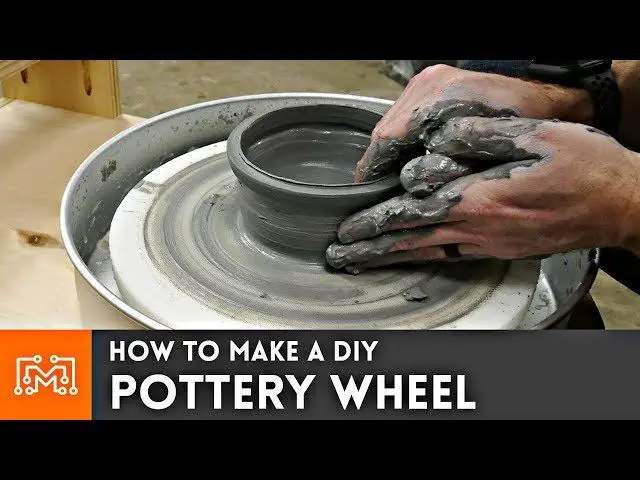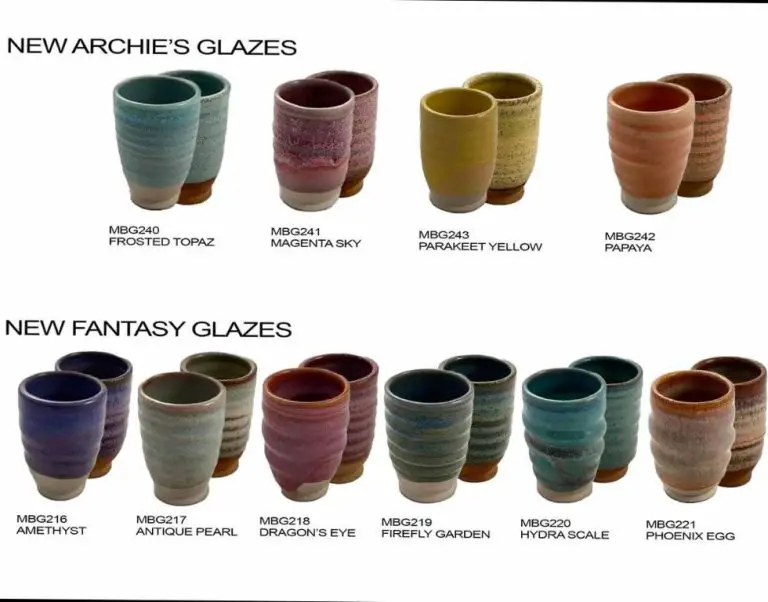How Do Clay Ovens Work?
What is a Clay Oven?
A clay oven, also known as a tandoor, is a cylindrical clay or ceramic oven used for cooking and baking. Clay ovens are traditionally used in Asia, the Middle East, and Mediterranean regions.
The earliest evidence of clay ovens has been found in the Indus Valley civilization dating back over 5000 years. Tandoor ovens were developed in ancient Persia and brought to the Indian subcontinent. They became a staple cooking method in Northern India, Pakistan and Afghanistan.
Today, clay ovens can refer to several types of ovens including tandoors from the Indian subcontinent as well as Middle Eastern ovens like the Armenian tonir or Turkish tandır. While styles vary across regions, the key characteristics are consistent – clay construction, cylindrical shape, and heating by burning wood or charcoal at the bottom of the oven.
Clay Oven Design
Clay ovens, also known as tandoors or tandoori ovens, feature a distinct cylindrical or bell shape that is optimized for preparing flatbreads, kebabs, and other traditional dishes. The ovens are traditionally made from local clay or other earthen materials like mud, sand, and straw mixed together.
The mixture is molded into a rounded shape about 1-2 feet in diameter with a narrow opening on top. Insulating materials like rice husks or vermiculite are often added for better heat retention. The walls are usually 6-12 inches thick to hold in heat while cooking.
To heat the oven, a fire is built inside using wood or charcoal. The flames preheat the dense earthen walls to temperatures around 480–550 °F (250–290 °C). Once hot enough, the coals are removed and the oven is ready for baking.
Clay ovens are especially well suited for cooking flatbreads like naan directly on the heated inner walls. The radiant heat from all sides perfectly crisps and chars the dough. Meat and vegetable kebabs can also be skewered and cooked in the glowing interior. The domed shape enables efficient heat circulation while containing smoke.
Heating and Cooking
Clay ovens like tandoors excel at high-heat cooking methods thanks to the way clay holds and distributes heat. The thick clay walls act as insulation, trapping heat inside the oven cavity. Once heated to a high temperature, the clay walls radiate heat gently and evenly into the oven interior. This allows clay ovens to maintain cooking temperatures from 300-600°F.
The hot clay surface sears meats and vegetables placed directly against it, much like a grill. At the same time, the ambient oven temperature roasts and bakes food. Common clay oven cooking techniques including grilling, roasting, baking, and tandoori-style cooking. Meats like tandoori chicken and naan bread do especially well cooked in the dry ambient heat of a clay oven.
According to this article, clay ovens need to be preheated for at least 3 hours to reach an ideal cooking temperature between 480°F to 520°F. The thick clay walls retain heat effectively to allow for prolonged cooking sessions.
Common Dishes
Clay ovens are commonly used to make a variety of breads, meats, vegetables, and regional specialties. Some of the most popular clay oven dishes include:
Breads
Clay ovens excel at baking breads like naan and flatbreads. The high heat allows the dough to puff up and bake quickly, resulting in a soft interior and crispy crust.
Meats, Fish, and Vegetables
Tandoors are ideal for cooking tender, juicy kebabs made from meats like chicken, lamb, and fish. The radiant heat from the walls of the oven cooks food fast while keeping it moist. Vegetables like onions and peppers can also be threaded onto skewers and roasted.
Pizza
Many clay oven pizzerias bake their pies directly on the floor or walls of the oven. The intense heat cooks the crust thoroughly without drying it out.
Regional Specialties
Clay ovens are used to make regional dishes like tandoori chicken from India, Uzbek plov, and Balkan burek pastries. The unique cooking environment imparts smoky, charred flavors.
Source: https://www.rhfpakistan.com/ArticleDetails.aspx?Id=4050&Cat=Article
Clay Oven Variants
There are several common types of clay ovens used around the world:
Tandoor
The tandoor is likely the most well-known clay oven, originating from the Indian subcontinent. It is a cylindrical clay or metal oven used for cooking meats, vegetables, and breads like naan. Tandoors can reach high temperatures of over 900°F and cook food quickly with hot, dry heat. Traditional tandoors are fired by charcoal or wood. https://en.wikipedia.org/wiki/Clay_oven
Tanour
The tanour is a clay oven used in the Middle East, similar to a tandoor. It is traditionally buried in the ground and is excellent for baking flatbreads. Tanours provide dry, radiant heat for cooking. https://encyclopedia.pub/entry/35608
Kornfeuerofen
Kornfeuerofens originated in Germany and are wood-fired brick or clay ovens once common in bakeries. They heat to around 800°F and use radiant heat to produce crusty loaves with moist interiors.
Wood Fired Pizza Ovens
Modern clay wood-fired pizza ovens are popular backyard additions. They can heat up to 700°F to quickly bake authentic, wood-fired pizza. These ovens use dry, radiant heat from a wood fire to evenly cook pizza crust.
Clay Oven Benefits
Clay ovens provide several benefits over other cooking methods. First, cooking in a clay oven enhances the flavor of dishes. The porous clay absorbs and retains moisture in a way that other materials cannot, infusing foods with more depth of flavor (FirstCry).
Clay ovens also offer health advantages. Cooking with clay pots exposes food to important minerals like iron, calcium, and magnesium that get transferred from the clay (Vegan First). The steam circulation in a clay oven also helps retain nutrients better than other cooking methods.
In addition, clay ovens are extremely energy efficient. The thick walls retain heat exceptionally well, meaning clay ovens use less energy to cook food compared to conventional stoves or ovens. This makes them an eco-friendly cooking option.
Finally, clay pot cooking requires little to no oil or fat. The steam does the work of cooking and flavoring the food. This makes clay oven dishes lower in fat and calories than those cooked on other appliances (Vegan First).
Modern Clay Oven Use
Clay ovens remain a popular cooking method in many parts of the world today. While traditional clay ovens are still used frequently in rural villages, modern restaurants and outdoor kitchens have also adopted clay ovens for their unique baking and cooking capabilities.
Many pizza restaurants use clay ovens to bake pizzas, producing a crispy crust and smoky flavor. The high heat of a clay oven is ideal for pizza dough. Wood-fired clay ovens can reach temperatures over 900°F, far hotter than a standard kitchen oven.
Outdoor kitchens built into patios and backyard spaces often include a clay oven alongside the grill and sink. Clay ovens allow homeowners to bake bread, roast meat and vegetables, or cook pizza outside. The thick walls retain heat for efficient cooking.
Commercial bakeries may use large clay ovens for baking artisan breads. The enclosed heat gives bread a distinct crust and complex flavor. The steam released from the baking dough keeps the interior soft and chewy. Many specialty bakeries market their handmade, clay oven-baked breads as a premium product.
While traditional in origins, clay ovens have secured an important place in modern cooking around the world. Chefs and home cooks alike appreciate the unique results only clay can provide.
Clay Oven Maintenance
Proper maintenance is crucial for getting the most out of your clay oven and extending its lifespan. Here are some key tips for maintaining a clay oven:
Curing
Curing is the process of slowly drying out the moisture in the clay and allowing the materials to settle. According to Guide to Curing and Maintaining a Traditional Clay Pizza Oven, the first oven cure takes 2 days and involves slowly increasing the fire intensity. After the first cure, general curing only requires 4 hours of firing. Take care not to overfire a new oven.
Heating Tips
Only use dry, well-seasoned wood to heat your oven to avoid excess moisture. Start fires small and increase heat gradually. Install a chimney damper to control airflow. Let the oven cool completely before cleaning.
Cleaning
Use a soft brush and vacuum to remove ash after each use. Wipe down surfaces with a damp cloth and mild soap as needed. Avoid abrasive cleaners or soaking the oven. Check for cracks and reseal as necessary.
Repairs
Inspect your oven regularly for cracks or damage. Seal minor cracks with oven refractory cement. For more significant repairs, contact the manufacturer or a masonry professional. Keep the oven protected from weather when not in use.
Clay Oven Safety
Proper safety measures should be taken when using a clay oven due to the high heat involved. Here are some key things to keep in mind:
Fire prevention is critical. The oven reaches very high temperatures, so fuel sources like wood or gas need to be properly managed. Make sure to have adequate ventilation around the oven and never leave it unattended when lit. Keep the area around the oven clear of flammable materials.
Ventilation is important since clay ovens produce smoke and carbon monoxide. Always use the oven in a well-ventilated area, either outdoors or with powerful range hoods indoors. Open windows and doors as needed. Don’t block the oven’s chimney.
The extremely high heat poses risks. Use proper mitts, gloves and tools when handling anything in or around a hot clay oven. Avoid touching any interior surfaces, which may be 600°F or hotter. Take care not to accidentally burn yourself on the mouth of the oven when accessing the food chamber.
Follow food safety precautions. Use separate utensils for raw and cooked foods to prevent cross-contamination. Cook meats thoroughly to safe internal temperatures. Refrigerate any leftovers promptly. Finally, be mindful that clay absorbs moisture and can harbor bacteria over time, so keep the oven surfaces clean.
Clay Oven DIY Tutorial
Building your own clay oven is an enjoyable DIY project that allows you to create an efficient and beautiful cooking tool using natural materials. Here is a step-by-step guide to constructing a simple clay oven:
Sourcing Materials
You’ll need clay, sand, straw, water, bricks or stones, and wood. The clay acts as the binder, while sand gives structure. Straw improves insulation. Opt for fire bricks or hard stones like granite for the base. Untreated wood works well for the door and frame.1
Shaping and Curing
Mix the clay, sand, and straw into a workable dough. Form your oven shape using bricks for support. Allow 4-6 weeks to dry and cure. Avoid extreme temperature or humidity changes while curing. The mixture should be bone dry before firing up the oven for the first time.2
Insulating
Insulation allows the oven to reach and maintain high temperatures. Fill gaps with an insulation material like perlite. Install a ceramic fiber blanket inside the oven dome. Leave the oven floor uninsulated.
Finishing
Apply a natural plaster like clay slip to the exterior for aesthetics and protection. Add a simple wood firedoor and chimney. Your DIY clay oven is ready for baking!


